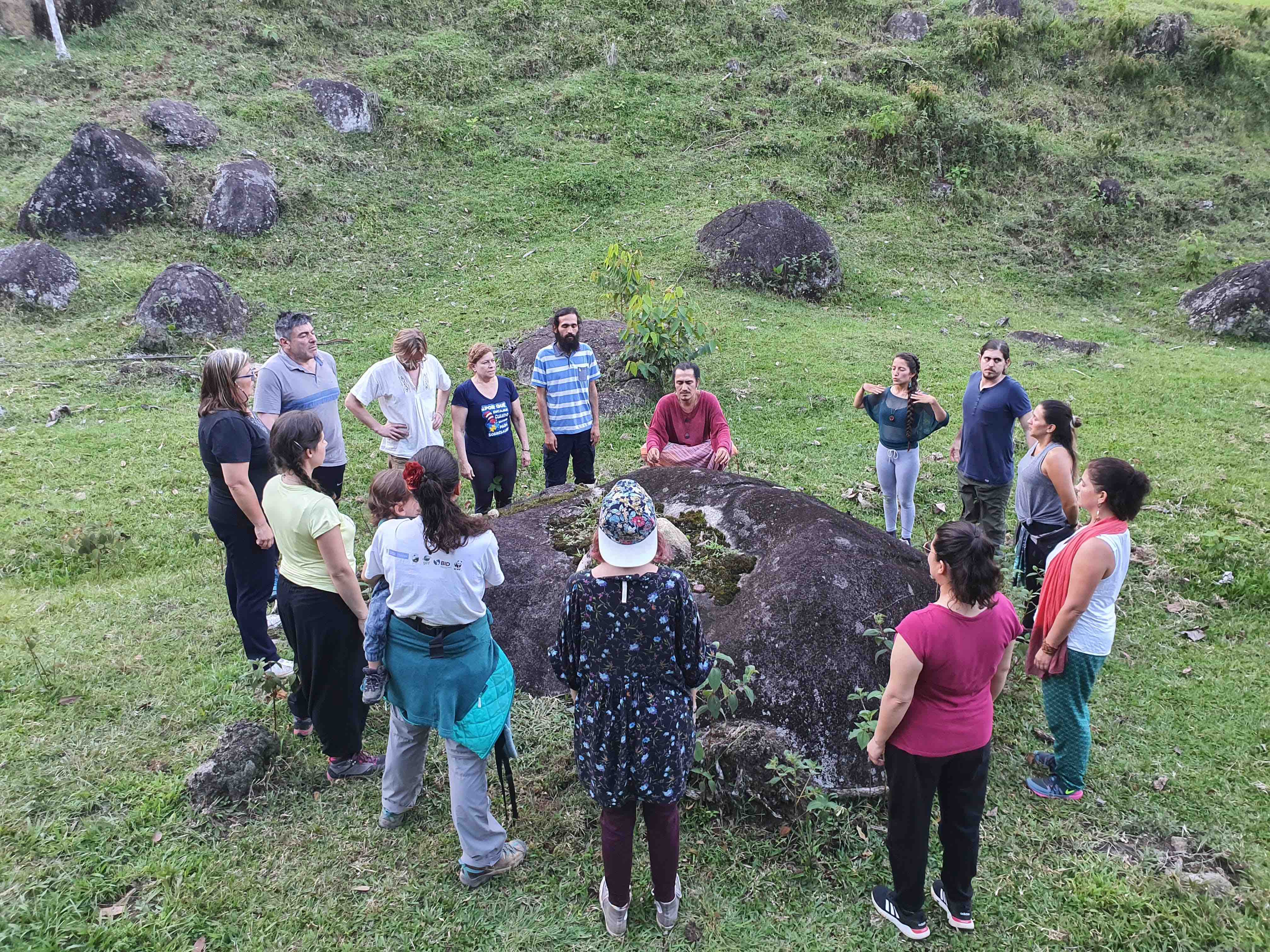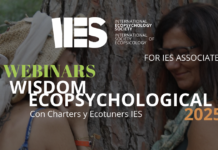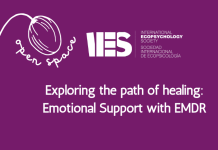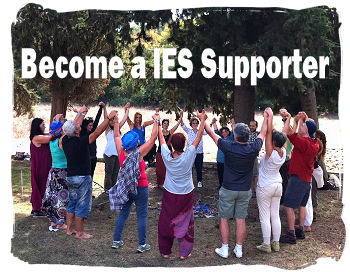Metaphor is an indirect communication resource that allows us to communicate with the emotional world of people in a way that does not trigger masked or defensive behaviors.
Linguistically, a metaphor is any kind of story, tale, proverb, saying, idiom… that has the function of conveying knowledge by comparison or through an isomorphism.
From its structure, the metaphor always communicates on two levels: a conscious one (the story itself) and an unconscious one (a message that helps to cast doubt on identity beliefs or makes important transformations within identity).
An ecopsychological paradigm, allows us to understand metaphor as a privileged key that opens the threshold of Biophilic emotions and restores our precious bond with earth. This key gives rise to an integral psychic movement, which enables new states of consciousness. Metaphor therefore becomes a powerful resource to understand our consciousness of being in nature, by making at least two paths possible:
1. The construction of the experience in nature as a metaphor for healing.
2. The perception of nature as a symbiomimetic metaphor.
Let’s look at each path:
1. The Nature Experience as a metaphor for healing:
I understood the concept of experience in nature as a metaphor for healing in an Experiential Learning expedition off the coast of Maine (USA) many years ago. We lived for 30 days on a small sailboat learning therapeutic processing techniques through experiential education. I will not go into details of what this expedition meant for my life, but it is important to contextualize that it was not easy. The conditions of living in such a small
place, the language difficulties and being so far away from my country, made me have some very frustrating and desperate moments. These conditions also favored the emergence of a marine experience, which to this day appears to me, as a metaphor for healing and resilience.
It all happened on Hurricane Island(home of Outward Bound in Maine). The facilitators there proposed to jump into the sea from a 3-4 meters high platform. The first day I didn’t take the plunge, I had a lot of fear and a great sense of helplessness and chaos in my mind. I spent that day turned inwards on myself and connected with my inabilities and my fears.
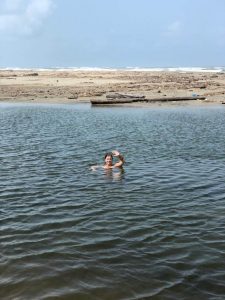
On the second day, there was a radical change in my thinking. It seemed ridiculous to choose not to participate in this experience. I could not say no to this experience any longer. And that’s how, with all the fear in my body, I jumped into the water. As I dived into the deepest depths of the sea, I saw darkness everywhere, and a second’s foray into this darkness felt like eternity to me. In that very second I also had time to look at myself and choose if I wanted to stay there, paralyzed with fear in the darkness, or fight and swim with all my strength upwards, towards the light. I had time to choose and I chose: I swam and surfaced.
And that’s how this experience in the sea became the most vivid metaphor I’ve ever had, about wanting to live and knowing that I have the will, the courage and the power to do so.
The use of experiences in nature as metaphors for healing can take place in “natural” ways, like I’ve experienced in various immersions and journeys in natural environments. In these cases, the processing and re-signification given by the participant, owing to a good accompaniment, becomes very important. It can also take place in a structured manner, through the design of metaphorical experiences of reconnection with nature. For example:
- Climbing a mountain as a metaphor for c
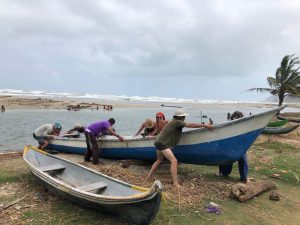 onnection with the energy of mother earth.
onnection with the energy of mother earth. - Rowing in a river, as an experience of resilience, analyzing the conditions of change that may occur in the river and the personal and collective resources that may emerge to resolve the possible challenges.
Here are some steps that can help design and facilitate metaphorical experiences in nature: (Adapted from Experiential Educator Gass, 1995):
- Identify the objectives of the ecotherapeutic intervention based on the diagnosis of the participant’s needs. The metaphor is thus thought of as a solution oriented to support them in their processes.
- Study how the experience in nature will have a successful end (healthier, more holistic, more sustainable, more transcendent), as a resolution to the corresponding needs or real life experience.
- Amplify the process, so that the participant can develop isomorphic associations of the experiences to his or her personal experience.
- Check the participant’s motivation and perception of danger to be sure that the metaphorical structure is holding attention, without being too demanding, or experienced as overly dangerous.
- Use reflection techniques after the nature experience, positively reinforcing the isomorphic connections between the nature experience and the participant’s psyche, and focusing on the integration of a functional change in their lifestyle.
Let us now move on to the second path, where nature itself becomes a symbiomimetic metaphor.
- Nature as a symbiomimetic metaphor:
Glenn Albrecht (2019) developed the concept of Symbiomimesis (2019) to show vital connections between nature and humans. He writes:
“Symbiomimicry, in addition to mimicking life forms, allows to replicate the vital processes (organic processes) that make strong and healthy the mutually beneficial association of shared life between and within different life forms. It will be through symbiomimicry that we will see humans and other life forms living together in mutually supportive relationships. Such a state of affairs will be new and will be based on positive emotions of the Earth that see shared life as the highest value.”
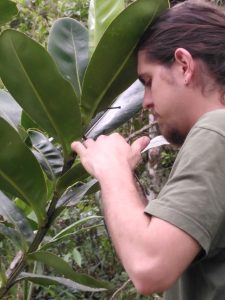 Symbiomimetics opens a huge door to the understanding of nature as a metaphor for healing for humans and for relationships between humans and non-humans. By contemplating, knowing, analyzing nature, we learn the basic principles that sustain life. This knowledge becomes a relational or symbiomimetic metaphor. This relates to an open question that we asked to the Koru Community a few months ago, about natural metaphors in times of uncertainty and change. The question was: Is there a metaphor in nature that reminds and encourages you to face the current uncertainty, and the shift towards a more regenerative and earth-connected life? And there were many answers that embraced natural processes.
Symbiomimetics opens a huge door to the understanding of nature as a metaphor for healing for humans and for relationships between humans and non-humans. By contemplating, knowing, analyzing nature, we learn the basic principles that sustain life. This knowledge becomes a relational or symbiomimetic metaphor. This relates to an open question that we asked to the Koru Community a few months ago, about natural metaphors in times of uncertainty and change. The question was: Is there a metaphor in nature that reminds and encourages you to face the current uncertainty, and the shift towards a more regenerative and earth-connected life? And there were many answers that embraced natural processes.
There are many things that nature teaches us about being without knowing and about interaction and belonging. Nature continually reminds us about change, uncertainty and even loss/death. It is surprising how much we fight against these realities, while nature coexists and survives with them.
For example, a seed under the ground, in the darkness of the earth, has an uncertain journey ahead of it. Although we suspect that there is a known seed, it cannot yet fully realize what it will become, or what the world will look like once it is outside the darkness.
The metaphor of the seed is an isomorphic reminder that there are times when the path of growth and transformation requires trusting the process of life itself and resting in the unknown.
The seed allows us a symbiomimetic effect, allowing us to make a change in our perception, mood, corporeality, even in our consciousness, while opening the door to a bond of love with the seed, and therefore with all life, thus enabling regenerative practices.
We leave you here a compilation video of the symbiomimetic metaphors that the Koru Community has given us as a gift.
Finally I will end with some basic keys to open the door to nature as a metaphor:
- Observe, feel, and contemplate on nature.
- Choose a landscape, a space, a tree, a river… and allow yourself to be there for 10 minutes every day.
- Ask yourself questions about yourself and your relationship with nature. Inhabit the question, feel it.
- Allow nature to give you clues to answer it.
- Talk to people who know about nature: biologists, naturalists, nature lovers.
- Feel accompanied by his strength.
Lastly, I would love to reaffirm that these two paths: the experience of nature as a path of healing, and nature as a symbiomimetic metaphor; are only two ways of the wide range of possibilities in the work with metaphors, as keys that open different thresholds on the path of the consciousness of being in nature.
For you, what other thresholds can this key open?
Bibliographical References:
- Albrecht, Glenn. 2019. Earth Emotions: New Words for a New World
- Gass, Michael A (1995). BOOK OF METAPHORS. Volume II. Association for Experiential Education. Kendall /Hunt PublishIng Company. Iowa
Koru Transformation Photos




